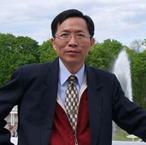Invited Speaker----Dr. Chitsan Lin

Professor, Department of Marine Environmental Engineering, National Kaohsiung University of Science and Technology, Taiwan
Dr. Chitsan Lin, currently serves as a professor of the Department of Marine Environmental Engineering, and was the Dean of the College of Ocean Engineering of NKMU 2009-2012. Dr. Lin obtained his Master of Environmental Engineeing Degree from the New Jersey Institute of Technology in 1988. After master degree, he jointed USEPA Region II to serve as a member of Technical Assistance Team (TAT) for two years. Finally Dr. Lin obtained his Ph.D. of Environmental Engineering Degree from the University of Connecticut in 1995. During the past 24 years, Dr. Chitsan Lin has published over 200 scientific and technical papers which include 70+ SCI papers and more than 180+ conference papers. In the year of 2010, Dr. Lin was invited to joint the editorial board member of the Environmental Engineering Science (EES), an US based journal. Finally, it is worth to mention that Dr. Chitsan Lin not only contribute in the academic research and teaching focuses. In his freetime, Dr. Lin also serves as a volunteered environmental educator to assist in the community recycling programs and public awareness education.
Speech Title: Bioremediation of soil contaminated with highly PCDD/Fs by food waste composting: Identification and phylogenetic relationship
Abstract: Bioremediation is an environmentally friendly and efficient technique to cope with dioxin-contaminated soil. To study the feasibility of this measure, dioxin-contaminated soil were fermented in aerobic condition with compost materials (mainly food waste). With incubation of 28 days, the overall removal efficiency of PCDD/Fs was 51%. In this process, the microbial community plays an important role in bioremediation for PCCD/Fs. The use of microorganism population analyses of 16S rRNA genes from samples provides a deeper understanding of the identification of microbial community structure. The result indicated the presence of microbiota in variety. Basically, they are divided into 9 main classes: Gamma proteobacteria, Alpha proteobacteria, Beta proteobacteria, Delta proteobacteria, Clostridia, Bacilli, Actinobacteria, Sphingobacteria, Flavobacteria, with the Bacilli class dominating 30% of the population. A phylogenetic tree of the 16S rRNA gene shows that a number of strains in each class are closely related, however, some strains belonging to different classes have high genetic similarities (> 95%). The results of data analysis on NCBI for C23O and dioxin dioxyhydrogenase genes showed many dioxin-degrading strains in the sample such as Pseudomonas sp., Bacillus sp., Paenibacillus sp., Ralstonia sp., Sphingomonas sp., Burkholderia sp., Novosphingobium sp. and Marinobacter sp. were observed as the potential degrader. These results have provided a deeper insight into the microbial community structure and phylogenetic relationship of the dioxins degrading microcosm.



